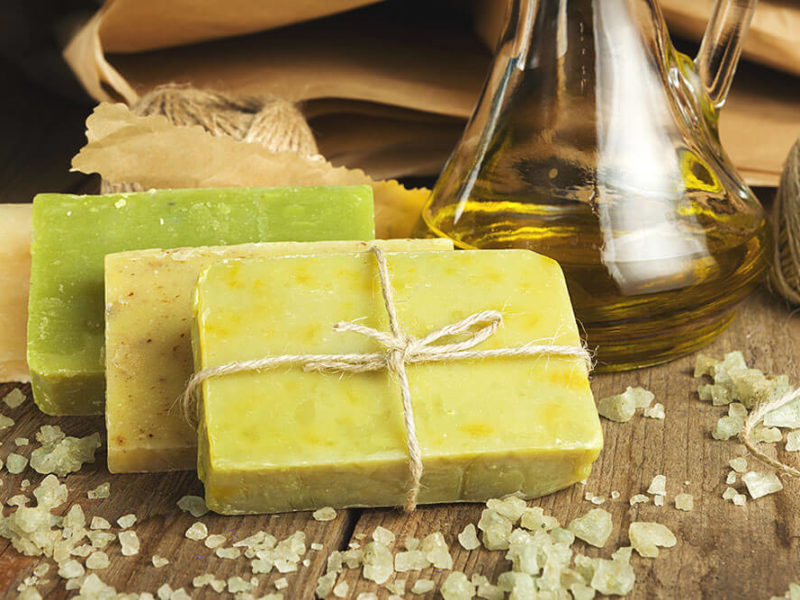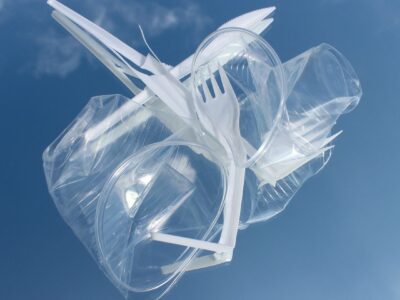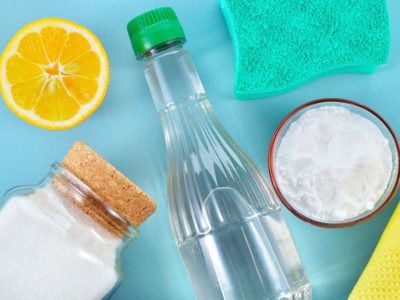Table of Contents[Hide][Show]
- The Plastic Problem
4 Ways to Reduce Your Plastic Consumption+−
- 1. Replace cling wrap and plastic lunch boxes with reusable alternatives.
- 2. Choose reusable and refillable bottles.
- 3. Switch to plastic-free soaps and scrubs.
- 4. Ditch the plastic shopping bag
- 10 Advantages of Buying Local
- 7 Reasons To Ditch Plastic Utensils For Good
- 10 Natural Cleaning Ingredients – Goodbye Toxic Products!
The Plastic Problem
Even if you’re not a fan, it’s hard to deny what the invention of plastics has done for mankind. As a versatile material, plastics support innovations in a slew of industries, such as aeronautics, healthcare, and consumer electronics. Plastics can facilitate exciting possibilities in sustainable building practices, along with offering a multitude of other benefits that make modern life possible.
But they’re not without their share of risk, most commonly in the form of environmental pollution and chemical toxicity. According to study by Science Journal, 4.8 to 12.7 million metric tons of plastic waste entered the ocean in 2010.
This doesn’t even consider the volume of indestructible plastic waste ending up in landfills. Additionally, plastic pollutants are known to absorb harmful concentrations of toxic chemicals from their surroundings, while entering and bio-accumulating in our food chain.
In 2008, the chemical Bisphenol A (BPA), commonly used in manufacturing plastic, was linked to health issues in adults and developmental problems in children, triggering a new wave of awareness over how this synthetic substance impacts our lives.
4 Ways to Reduce Your Plastic Consumption
It’s evident that many concerns about plastic stem from improper practices surrounding its manufacture, use, and disposal—not necessarily the plastic itself.
By tweaking our day-to-day habits and choices, we can eliminate unnecessary plastic consumption and contribute to reduced demand and reduced waste—all while enjoying this incredible material where it can safely serve us best.
1. Replace cling wrap and plastic lunch boxes with reusable alternatives.
The jury is still out on just how harmful cling wrap (also called “plastic wrap”, “cling film”, “Glad wrap”, and “Saran wrap”) may be to the human body. But the environmental impact makes a strong case for cutting down our consumption. Cling wrap is a plastic too soft and stretchy to be recycled, meaning every inch you use ends up in landfill.
For a plastic-free alternative, simply cover your food with a bowl or plate, or substitute your cling wrap with wax cloth. You can make wax cloth at home, reuse it for several months, then re-wax and use again.
With glass and food-grade stainless steel containers, you’ll find sturdier, fridge-stackable options that carry the added convenience of being heat resistant. This gives them a clear advantage over both cling wrap and plastic lunch boxes because they allow you to safely re-heat your food in a microwave or oven without the need for extra crockery. Just remember to check the safety label to see how much heat your container can handle.
2. Choose reusable and refillable bottles.
In the midst of a water crisis, commercially bottled water is one of very few ways to ensure safe drinking water for you and your family. But beyond this, our culture’s mass consumption of bottled water sustains an industry with an overwhelming environmental footprint.
If you have access to safe, clean drinking water on tap, make the most of it with your own reusable glass or steel water bottle. This ‘reuse and refill’ ethic can apply to hand soaps and detergents too; opt for bulk refills and reusable containers instead of buying new plastic bottles whenever you need more soap.

3. Switch to plastic-free soaps and scrubs.
Did you know common bathroom products often contain plastics? You’ll find them in the form of micro-beads—tiny colorful exfoliates present in some face scrubs, body washes, and even toothpaste.
The micro-beads used in such products don’t dissolve or biodegrade and are small enough to get past the water-treatment filters that prevent most solids from reaching the natural water systems. These tiny pieces of plastic wreak havoc on wildlife and the environment in our rivers and oceans.
However, this doesn’t mean you have to give up body scrubs entirely. Instead, look for products containing natural exfoliates, such as ground pumice, peach stone, nut shells, grain meals, or sea salt. Many of these alternatives will also contain other lush ingredients and moisturizers that are great for your skin. Or, you can even take up dry skin brushing which has many additional benefits.
4. Ditch the plastic shopping bag
Plastic bags are so readily available, it’s easy to consume them without thinking. If you do have a stockpile of plastic bags in your home, check the waste management programs in your local area. Some supermarkets that provide plastic bags also take them back for recycling. Plastic bags can also be given a second life as plastic yarn, prolonging their usefulness before being disposed of.
In place of plastic shopping bags, opt for cardboard boxes, personal shopping trolleys, or reusable shopping bags. Once you do, however, it’s important to incorporate these replacements into your routine, as reusable bags are only beneficial for the environment if they actually get re-used.
You May Also Like…




